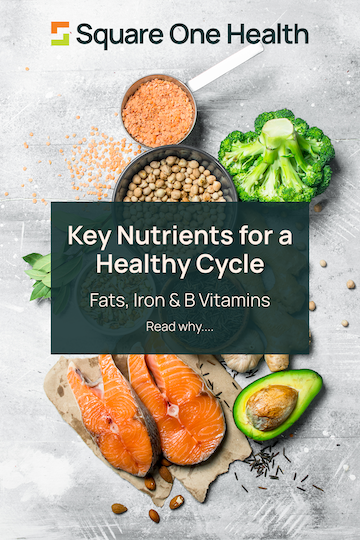Estrogen Dominance Causes: What You Need to Know
- Stephanie - Square One Health
- Aug 29
- 3 min read
Do you experience painful periods, unexplained weight gain, or mood swings that seem to have a mind of their own? You may be struggling with estrogen dominance, a state of hormonal imbalance that affects countless people today. While estrogen is a vital hormone, having too much of it relative to other hormones like progesterone can wreak havoc on your body. But what exactly causes this imbalance? A functional nutrition approach helps you look beyond the symptoms to find and address the root causes.
Here are the top three causes of estrogen dominance and how a functional approach can help you find balance.

Cause 1: Impaired Hormone Elimination
The process of managing hormones doesn't end once they've done their job; your body must eliminate them efficiently. The primary organs responsible for this are the liver and the gut.
Your liver processes and packages hormones for removal. From there, they are sent to the gut for excretion. A healthy gut and adequate fiber intake are crucial for this final step. Fiber acts like a broom, binding to excess estrogens and ensuring they are swept out of the body. Without enough fiber and a healthy gut, these excess estrogens can be reabsorbed into your bloodstream, contributing to estrogen dominance.
How to Address It: Focus on nourishing your liver and gut with a diet rich in fiber-filled fruits, vegetables, and whole foods.
Cause 2: Hormone Production & Metabolism
Estrogen dominance isn't always about having "too much" estrogen; it's often a case of having too little progesterone to balance it. This imbalance can lead to a host of symptoms, including PMS, irregular periods, and fatigue.
The Progesterone Drop: During perimenopause, progesterone production is one of the first hormones to decline, while estrogen may drop more gradually. This creates a state of estrogen dominance even as total hormone levels are falling.
The Stress Connection: Stress is another major factor. The body prioritizes cortisol production during periods of chronic stress, a phenomenon known as "cortisol steal". This can divert the building blocks away from progesterone synthesis, contributing to that estrogen dominant state.
How to Address It: Prioritize sleep and stress management to support your adrenal glands, which will become a primary source of hormones as you age. Also, nourish your body with healthy fats and proteins, as cholesterol is the "backbone" of all sex hormones.
Cause 3: Environmental Mimickers
In today's world, our bodies are exposed to numerous chemicals that can mimic estrogen and disrupt a delicate hormonal balance. These "xenoestrogens" are found in everyday items:
Plastics: Chemicals like Bisphenol A (BPA) and phthalates.
Pesticides: Residues on conventionally grown fruits and vegetables.
Hormones in Food: Factory-farmed meats and dairy often contain added hormones.
Household Chemicals: Everyday household products and cosmetics may contain chemicals like parabens.
How to Address It: Start with small, manageable changes. Opt for organic produce and hormone-free meats when possible , choose glass or stainless steel food containers over plastic , and look for personal care products that are free from endocrine-disrupting chemicals.
Estrogen dominance is a complex issue, but by addressing these three root causes—elimination, metabolism, and environmental exposure—you can take powerful steps toward hormonal balance. This is about working with your body, not against it, to create lasting, sustainable wellness.
Ready to find the root cause of your symptoms?
Book a free discovery call to discuss your health story and learn how a personalized plan can help you feel better in your body.
Medical Disclaimer: This content is for informational purposes only and is not intended to be a substitute for professional medical advice, diagnosis, or treatment. Always seek the advice of your physician or other qualified health provider with any questions you may have regarding a medical condition.

